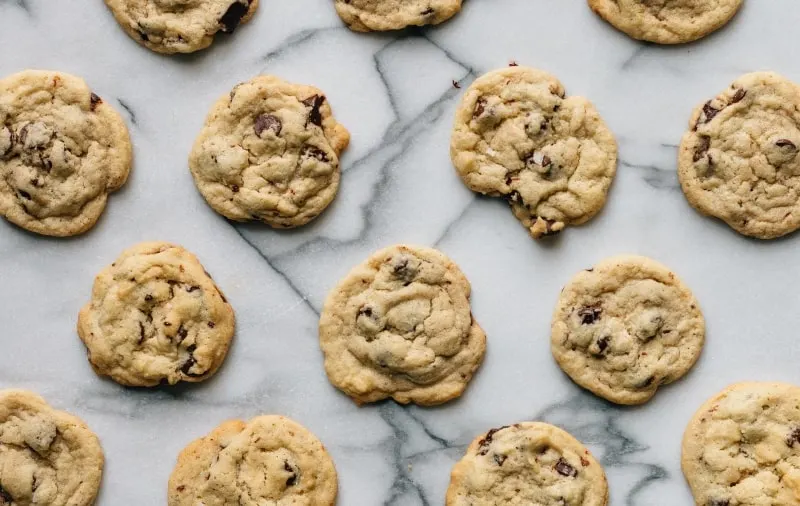Cookies come in plenty of different sizes, thicknesses, colors, and textures, and everyone has their preference. Some people swear by cookies that are thin and crisp, some like the type that are light and cakey, but others like cookies that have more chewiness to them.
If you’re into the chewy type of cookies, then you’re probably going to be able to make your cookies even chewier by using bread flour. Hurray!
Bread flour can be used to make cookies that are slightly denser and chewier. Since bread flour contains more protein than all-purpose flour, it can create more gluten, which gives the cookie more bend and chew. This is ideal for those who like the extra chewiness, but it is considered too chewy by some.
So, if your cookies just aren’t cutting it in the chewiness department, try substituting bread flour for the all-purpose flour next time you make them.
Of course, not all cookie recipes will suit the addition of bread flour. To make a chewy cookie, there needs to be the right ingredients and ratio of ingredients used. You can’t expect to switch the flour in any recipe and have perfectly chewy cookies every time.
Make sure that you’re finding a ‘chewy cookie’ recipe first, then try using bread flour. To take it even further, make a batch with all-purpose and a batch with bread flour to see how they compare.
Why Bread Flour Can Make Great Cookies (And Why It Might Not)
If you’re obsessed with chewy cookies, like me, then you’re going to want to try making your cookies with bread flour.
When you use bread flour, you’re introducing more gluten to the cookie mix. Gluten is what’s used to give bread its structure and chewy texture. The chewy aspect of bread can be added to cookies with the simple substitution of bread flour.
When you’re using bread flour in cookie dough, you won’t be building as much gluten as you would with bread dough since you’re not kneading it (and it contains egg and butter, which reduces gluten development). You’ll just be creating enough gluten during mixing to add a satisfying amount of extra chew. Mixing the cookie dough too much and you might create too much gluten, which would result in overly chewy cookies.
You don’t want to use bread flour in all cookies.
We know that bread flour is great for chewy cookies, but it’s not so great for other kinds of cookies. If you’re wanting thin and crisp, or cakey cookies, then I wouldn’t suggest using bread flour since you just won’t get the texture or appearance as you would if you were to use all-purpose flour.
Not only will it make these other types of cookies chewier than they need to be, but it’ll also reduce spreading and make them denser, which, generally speaking, isn’t great for any other type of cookie.
The Difference Between Bread Flour And All-Purpose Flour
The main difference between these two types of flour is the protein content. Bread flour has a higher protein content, which is more suitable for bread, whilst all-purpose flour has a slightly lower protein content, which is suitable for plenty of different purposes, as the name suggests.
There are two types of protein in flour: gliadin and glutenin. When combined with water, these two proteins come together to form gluten, which is what makes dough elastic and gives bread its chewiness. If it weren’t for gluten, baked goods wouldn’t have any structure.
Since bread flour contains more protein, it can create more gluten, which therefore gives a chewier texture to whatever it’s used in.
Mixing Bread Flour And All-Purpose Flour Is Best
Even if you like chewy cookies, using bread flour alone may lead to an overly chewy cookie by your standards.
How chewy the cookies get depends on the type of bread flour you use. Generally speaking, the majority of bread flour will have a protein content of 12% or higher, and the higher the protein, the more chewy the cookies will be.
If you find that they are too chewy for you, then you can mix the bread flour with all-purpose flour to ‘dilute’ the protein in the flour. By doing this, you’re lessening how much gluten can be developed, so the cookies won’t become as chewy.
You might want to small around with this in small batches by mixing different ratios of the two types of flour. Start with 50% of each then adjust with more all-purpose flour if it’s too chewy, or more bread flour if it’s not chewy enough.

